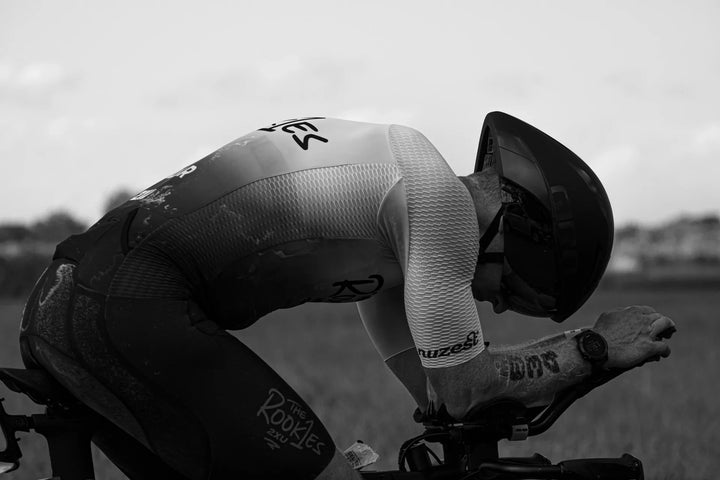Taper week. It’s a love hate thing.
The purpose of a taper is to allow the body to rest up a little, absorb the work that has already been done and allow you to toe the start line feeling fresh both physically and mentally – squeezing every drop out of both your ability and training application.
In other words, race day is the highlight reel.
And yet, how often does it go wrong?
I can say from personal experience, there’s been a number of times that I’ve felt sub-par coming into multiple training sessions in a race build up. It’s not ideal. Especially when it’s quite literally your job, or you’ve invested endless time, energy and money in the lead up, making other compromises in the process.
Getting the taper is an art and science combo, and getting it wrong is miserable and frustrating at best.
Tapering simply means reducing training load so you get the full benefits of racing while not fatigued, without losing fitness in the process. What that looks like relies on answering several key questions:
- Race focus: is this an A race? Or one you’re just getting through to add some fitness to the training bank? Depending on the approach and importance of the event will depend how you approach the taper (or lack of taper). I know some people really respond to doing lots of smaller races as a way of building specific race fitness for their major events. These athletes are generally the ones who might not respond well to lengthy or heavier blocks of training for various reasons including focus, time or simply that’s the way they best respond and get prepped.
- Frequency: picking out only a few key events and in between prepping long and hard. These races become more of an opportunity to fine tune tactics, race day nutrition etc so that each event becomes important to replicate and learn from. In these instances, a taper is crucial, and a way to explore exactly what is going to work best come the main event.
- Volume, frequency, intensity: what has your prep looked like? How much can you afford to taper or are you still in the early days? Maybe it’s your first race and you’re still new to the training routine and building fitness. In this case, a taper is unlikely to benefit and may in fact be detrimental.
- Fitness and experience: so much of a taper is personal and figuring out what actually makes you feel good. You can follow some guidelines but there is no substitute to working things through yourself and finding what works!
Here’s a few pointers to get started:
The longer the race the longer the taper, generally speaking anyway. With most people, and for most events reaping benefits from a 1-2 week taper. Having said that, shorter races – like sprint triathlons – a couple of days of reduced volume should suffice. For an Olympic, Half IRONMAN or Half Marathon – 1-2 weeks, while a Full IRONMAN or m=Marathon may take 3-4 weeks of reduced load and uptick in focused recovery.
- Reduce volume but not intensity. Knock back the training volume to about 20-25% for each week that you taper, but try to stick to your regular routine and throw in some race pace intensity. Increase the rest between intervals so you aren’t overdoing things.
- You can definitely taper too much! Too much inactivity or too sharp a drop can make you feel sluggish and tired come race day. Keeping race logs can help remind you of when you were feeling good and what the preceding days and weeks felt like. Also be aware that if you are overtrained, then hit a taper, you will still be tired, no amount of taper in that week or few days before will make up for a training program without adequate rest and recovery incorporated earlier in the prep.
-
Nutrition and mental prep are also key parts of the taper. As you taper, your glycogen stores can increase by as much as 15 percent, which is important considering glycogen and fat are the two primary fuel sources for endurance athletes. You want to try and match your reduced volume with a slight reduction in energy intake. Keep things fresh and wholesome, eating well will make you feel better mentally as well as support the adaptation processes taking place. If it’s a longer race, then you might be wanting to also up the carbs as you get closer to race day. Again this isn’t just a matter of gorging on extra calories, it’s a simple matter of reducing the protein and fat on the plate and upping the ratio of carbs. Pulling back on the high fibre options for some in the two days prior can also help mitigate fullness and GI risk.
- Be prepared to feel grumpy and out of sorts, and even more tired than usual. This is pretty standard and shouldn’t make you feel stressed. Note it down for next time, along with the rest of what you do and how you feel throughout the taper – then you’re better able to adjust, tinker and work out what suits you best.


0 comments